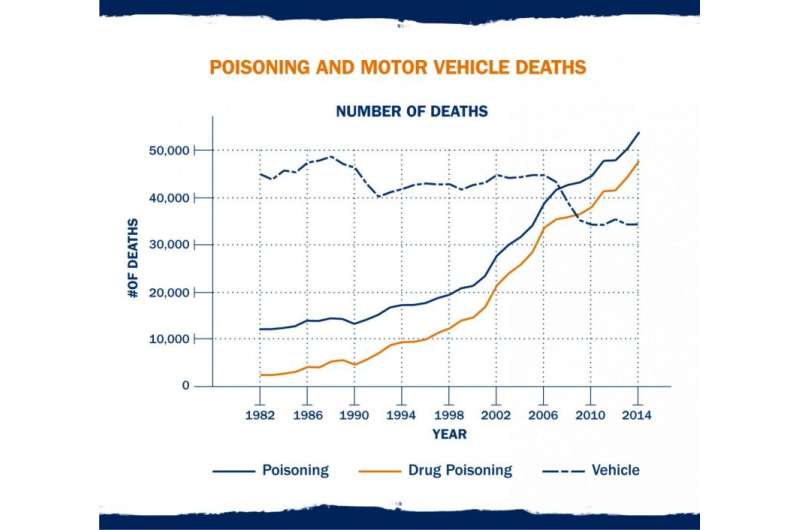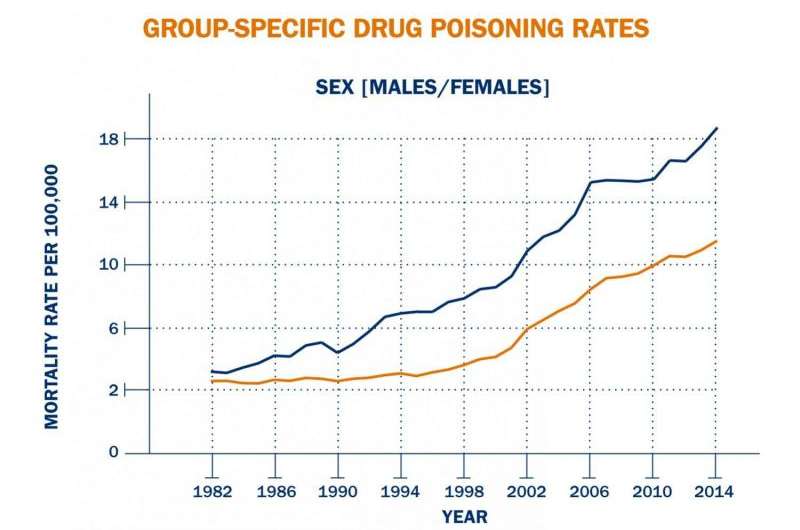Expert says opioid epidemic is even worse than we thought

In the last two decades, drug overdoses have slowly overtaken motor vehicle fatalities as the leading cause of death in the United States. In Virginia alone, the Office of the Attorney General estimates that more than 900 residents died from overdoses of heroin or prescription drugs in 2015.
Yet the University of Virginia's Christopher Ruhm believes officials are still underestimating the scope of opioids and other drugs involved in these fatal overdoses. Ruhm, a professor of public policy and economics in the Frank Batten School of Leadership and Public Policy, is examining Centers for Disease Control death certificate data in order to find out what accounts for gaps in national estimates.
In a working paper for the National Bureau of Economic Research, "Taking the Measure of a Fatal Drug Epidemic," Ruhm uses statistical analysis to account for the roughly 20 to 25 percent of death certificates for which an overdose is listed as the suspected cause of death, but no drug is specified. By comparing these certificates with certificates from areas with similar demographic data but more accurate reporting patterns, he shows that national estimates for specific types of drug involvement are 30 to 50 percent lower than they should be.
Ruhm explained his findings to UVA Today and what they mean for health policy in America.
Q. What led you to believe that the existing death certificate data was problematic?
A. I began doing analysis of the data on death certificates not initially realizing that there was a problem. However, as I got into the research I discovered that, in many cases of fatal drug overdoses, the death certificates did not specify which drugs were involved. In reading prior analyses, I realized that other researchers were aware of this issue, but that no one had undertaken a systematic effort to address it.

Q. What important trends are we missing by not collecting better data on drug overdoses?
A. There are two aspects to this question. The first is that by lacking adequate detail on death certificates, we have a poor understanding of what drugs or combinations of drugs are involved in fatal overdoses. The second is that prior research has not done all that it could to identify the drugs involved in these deaths.
My analysis attempts to address the second issue, by using prediction methods to ascertain the drugs involved in cases where they are not well-specified on death certificates. Doing so substantially increases the estimates of the drug poisoning deaths involving combinations of drugs. For example, I estimate that drug combinations account for 56 percent of the increase in drug poisoning deaths occurring between 1999 and 2014, and 67 percent of that between 2007 and 2014.
Q. How have the primary culprits in the overdose epidemic changed since the 1990s?
A. Arguably, the overdose epidemic actually began in the early 1990s, or at least became much worse beginning then. From the mid-1990s through mid-2000s, this was led by increased use and deaths due to opioid analgesics (prescription opioids). However, since around 2008, and particularly since 2010, heroin has emerged as a major, and arguably the most important, problem. In addition, the use of drug "cocktails" – combinations of drugs – are driving much of the fatal drug epidemic.
Q. What portions of the population are most affected by this epidemic?

A. Fatal overdose rates are higher for males than females, for whites than blacks or other nonwhites, and for 25- to 64-year-olds versus those who are older or younger. Overdose death rates tend to be highest in "middle America," particularly in Appalachia, the Rust Belt and many of the western mountain states. There are also pockets with high death rates in many other parts of the country as well.
Q. What possible policy solutions does your data point to?
A. First, we need to obtain better information and, until we obtain it, we need to creatively use the data that we have so as to better understand the nature of the fatal drug epidemic.
Second, we need to fully recognize and try to slow or reverse the rise in heroin-related overdoses and deaths. We have made some progress in recent years addressing the rising number of deaths related to prescription opioids, but problems related to heroin use and abuse are rising extremely quickly.
Third, we need to better organize our policy approaches and treatment efforts to the rising use of combinations of drugs, which frequently present greater risk than the use of a single drug type and may require more complicated and nuanced treatments and interventions.
















